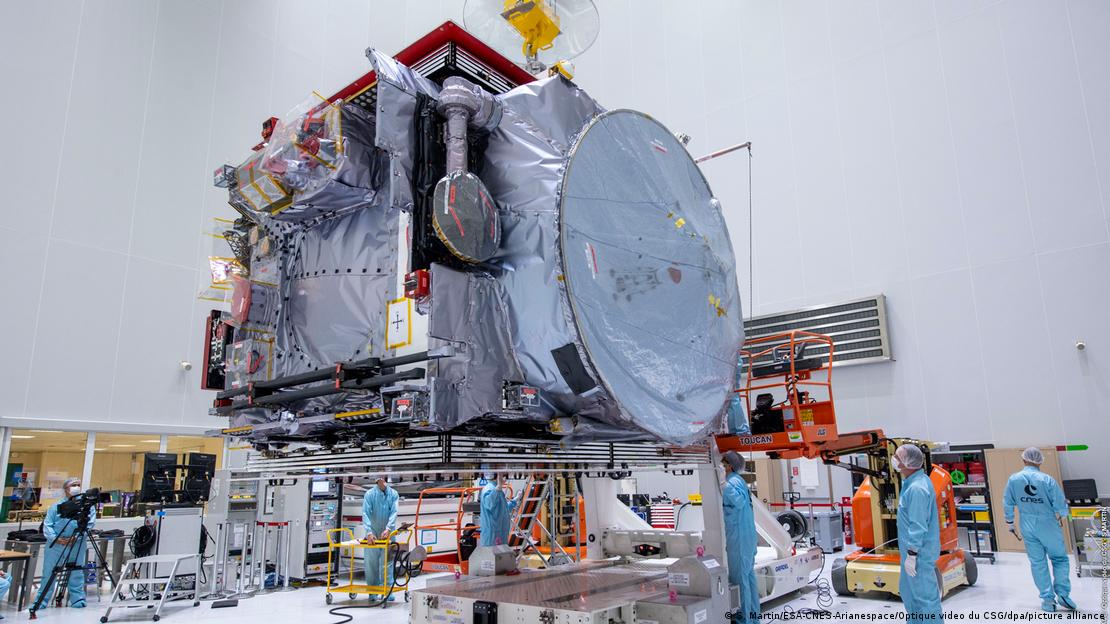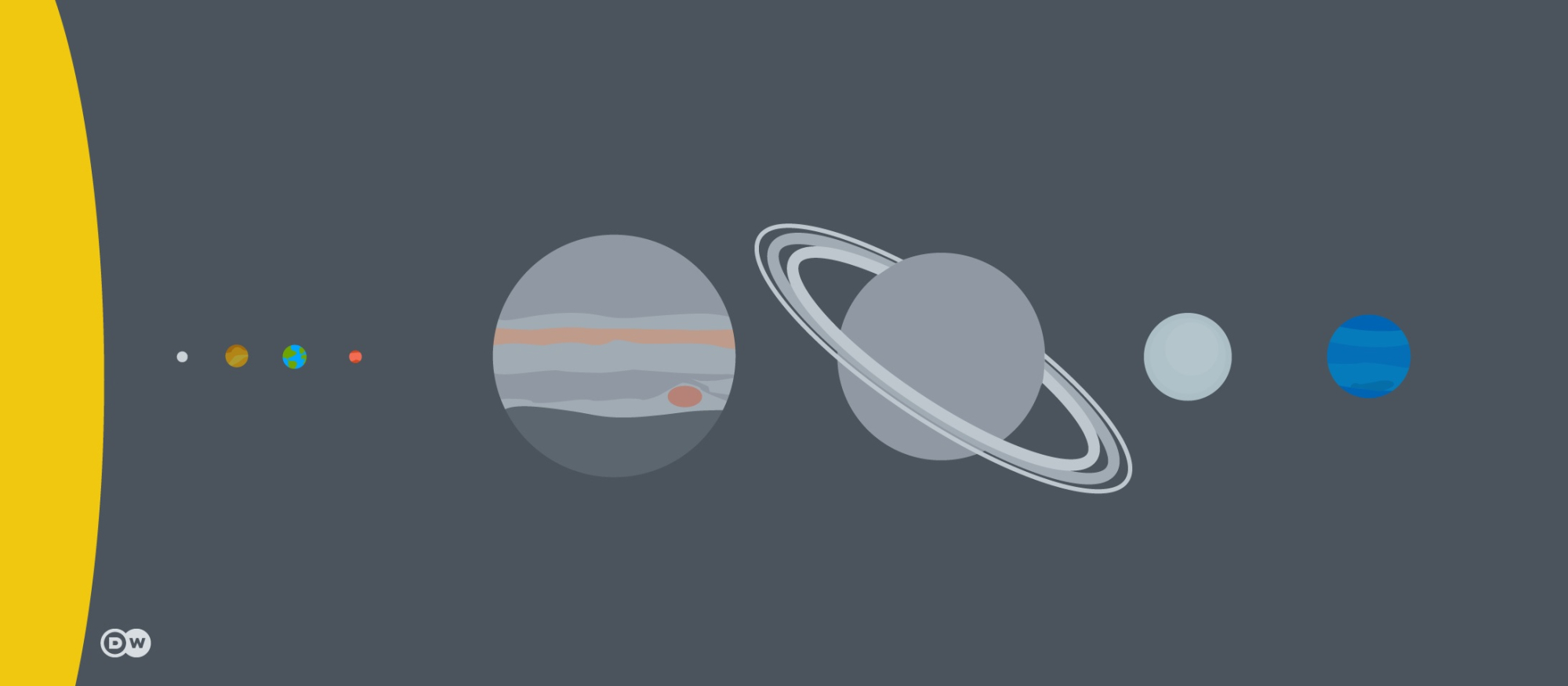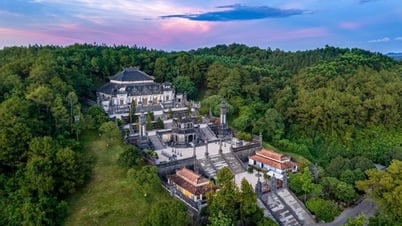One of the mission’s goals is to characterize “these moons as both planetary bodies and potential habitats,” according to the ESA. In other words, the mission aims to find out whether life could have existed or is present on the moons Ganymede, Europa, or Callisto. The launch was originally scheduled for Thursday, but was postponed due to the risk of lightning strikes in Kourou.

The Juice exploration mission's spacecraft at the ESA center in Guiana. Photo: DW
The spacecraft will launch on an Ariane 5 rocket, and will be the first to change orbit from another planet (Jupiter) to one of its moons. And it will be the first satellite to orbit a moon other than Earth.
The total cost of the mission is around €1.6 billion. ESA says Juice will carry a number of high-tech systems on board, “including remote sensing, geophysics and the most powerful in-situ payload ever flown to the edge of the solar system”.
The mission is led by Europe, with NASA contributing a UV imaging spectrometer. The Japanese space agency JAXA contributed hardware for some of the spacecraft's instruments, while Israel's ISA space agency contributed hardware for a radio science experiment.
If all goes according to plan, Juice will arrive at Jupiter in July 2031, a journey that will take eight years. It will make 35 flybys of the three moons between July 2031 and November 2034, then enter orbit around Ganymede, where it plans to stay and collect information until December 2035.
Jupiter, the largest planet in the solar system
While the Juice mission involves three moons, Jupiter has a total of 95 moons with confirmed orbits.

Planets in the solar system. Photo: DW
It is the largest planet in our solar system and has twice the mass of all the other planets combined. As NASA puts it, “if Earth were the size of a dime, Jupiter would be the size of a basketball.”
Jupiter's size gives it an incredibly strong magnetic field. Part of the Juice mission is to find out how this affects the icy moons surrounding the planet.
The moons in the Juice quest
The moons Ganymede, Callisto, Europa, and Io were discovered by the Italian astronomer Galileo Galilei in 1610 and are known as the four "Galileo moons". They are the first objects found in our solar system orbiting an object other than the Sun or Earth.
Ganymede, the Juice mission’s primary target, is the only moon in our solar system that generates its own magnetic field. It is also the largest moon in our solar system, with a diameter of 5,268 km and a metallic core made of heavy liquid iron. Its subsurface ocean is thought to contain more water than all the oceans on Earth combined.
Callisto is Jupiter's second-largest moon, and ESA scientists hope Juice will gather information about Jupiter's environment by orbiting it. Callisto is made up of rock and ice and may have a subsurface liquid ocean that lies more than 100 kilometers deep.
Europa is slightly smaller than Earth’s moon and may contain vast underground oceans. It is made mostly of silicate rock and has a crust of water ice. Scientists think Europa may be spewing water vapor into space through plumes and geysers. One of the main goals of the mission is to find out if there are any signs of life and pockets of water on Europa.
The three moons are all named after figures from Greek mythology, with Ganymede said to be the most beautiful mortal on Earth and abducted by the gods to serve as Zeus' cupbearer. Callisto was a nymph who was transformed into a bear and later became the constellation Ursa Major. Europa was the mother of King Minos of Crete and the lover of Zeus.
Quoc Thien (according to DW)
Source



![[Photo] General Secretary To Lam chairs the 14th Central Military Commission Conference](https://vphoto.vietnam.vn/thumb/1200x675/vietnam/resource/IMAGE/2025/6/20/a9d25fc6dd664fb9a3757502f32e5db0)
![[Photo] Panorama of the Opening Ceremony of the National Press Festival 2025](https://vphoto.vietnam.vn/thumb/1200x675/vietnam/resource/IMAGE/2025/6/20/6b835ee92c2c4df587af73cb2d1f4f5f)
















































![[Maritime News] Wan Hai Lines invests $150 million to buy 48,000 containers](https://vphoto.vietnam.vn/thumb/402x226/vietnam/resource/IMAGE/2025/6/20/c945a62aff624b4bb5c25e67e9bcc1cb)
















































Comment (0)